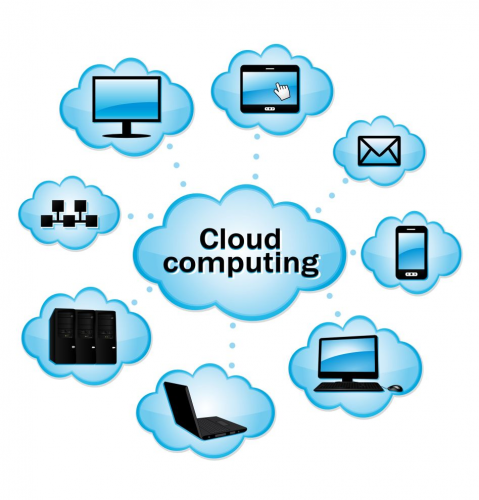The "Cloud" and "Cloud Computing" explained
The Cloud
I’m sure you've all heard the term “Cloud” at least a few times in the past few years if you use the internet regularly. And by cloud I don’t mean the mass of particles of water or ice suspended in the atmosphere, of course. So what is it then? Chances are that you've already entered the cloud but you just don’t know it yet.
Explain, Please
The cloud, in simple terms, is a network of servers that allows users to access data, applications and services from a remote location. Typical examples are online file-hosting services such as Dropbox, SkyDrive and Google Drive. After creating an account in one of those services you can start uploading your files for whatever reasons you want to. Your files will then exist in the “Cloud” and you can access them from any computer or device with an internet connection. The ability a network has that allows a user to access an application or file on any of its connected computers is called cloud computing.
What Are The Advantages?
A lot of companies moved into the cloud in order to minimize their software and hardware costs. These include buying and maintaining servers plus obtaining different kinds of required licenses (offline licenses, backup licenses, antivirus/anti-spam licenses, etc.). A cloud service isn't very cheap either, but those kinds of costs are automatically eliminated and can help companies save a lot of money from them. Having said that, you can imagine that the other advantages of using a cloud service are mainly accessibility, since it’s easier to access data from any computer connected to the net than it is from only one computer, and the emergency backup solution it provides you with when a catastrophe hits local servers. In addition, you can adjust a cloud service to your needs easily, meaning that you only have to ask for a bigger file storage in order to get it, or change your subscription plan for less capacity and a reduced cost if you think you don’t need the extra space. This way you don’t have to worry about anything other than the cost (like technical issues with servers).
Disadvantages?
Not always a company gains from making a move like that, financially-wise. Sometimes, the costs of entering and staying into the cloud are equal to or higher than the ones a company currently has and is not very easy to make that step. In other words, it’s just not worth it (but for the cloud to become so popular in the recent years, then this case must be rare). Another disadvantage is the fact that you have to trust the cloud service you are using and its levels of security- without knowing how high they are and what’s going on in the background.
Who Uses Cloud Services?
Nowadays, everyone uses cloud services. By taking a photo from your smartphone and uploading it to Instagram, you use the cloud. By sharing a Google Doc with a friend or coworker, you use the cloud. It’s actually pretty hard not to use the cloud these days since most of your online activity consists of some sort of uploading data somewhere that is part of the cloud.
Anything Else I Should Know About Cloud Computing?
There are many things you can learn about cloud computing (e.g. service models- Infrastructure as a Service (IaaS), Platform as a Service (PaaS), Software as a Service (SaaS), Network as a Service (NaaS), etc.) which will help you form a better opinion on the subject, but they are more advanced concepts of the “Cloud”. Below is a video explaining the key points of cloud computing as I mentioned above that will certainly clear things up for you if you’re still confused about it:


